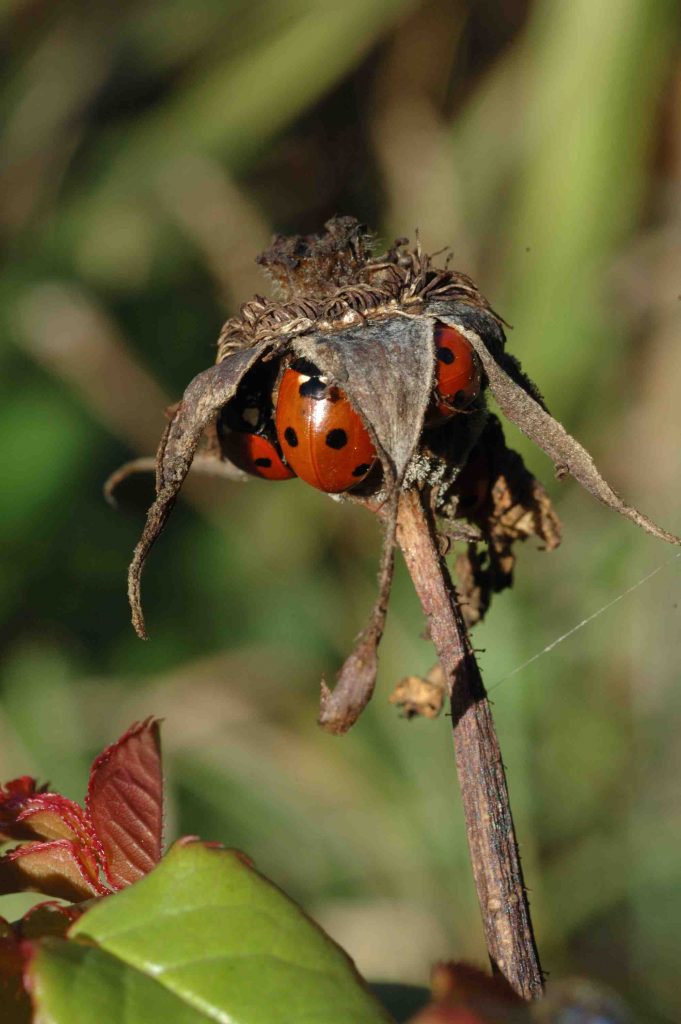
Of all the insects that we find in our gardens, ladybirds, after bees, must be the most highly regarded. Although their colouration is designed to warn birds that they are not a tasty snack, we are always glad to see them. While I shake or brush off any other insect that uses me as a pathway, I am happy to let a ladybird crawl over me. And if one is in danger while I am gardening I will pick it up and put it in a safe place.
Much of our affection for ladybirds is because they are voracious aphid eaters. Not using garden sprays will do a lot to help them survive but at this time of year the adults need to find somewhere to shelter for the winter. They may crawl into sheds or among old pots but they will certainly use a bug hotel if you provide one. They also shelter in evergreens such as box and conifers. You often find them clustered together in a sheltered dry spot such as under coping stones on walls, waiting for warmer weather and they will find all manner of shelter on dead plants in the garden.

Of course we all know what a ladybird looks like – though there are species with yellow spots or yellow wing cases and black spots. And then there is the introduced harlequin ladybird which can be a wide range of colours.
But not everyone can recognise a ladybird larvae, the most active, feeding stage, or the pupa, when it is changing shape into a beetle.


Ladybird facts
The most common species in the UK is the 7 spot ladybird.
There are 47 species of ladybird in the UK but 5000 around the world.
When threatened, a ladybird secretes a drop of yellow, foul smelling liquid to prevent attack by ants or birds
Ladybirds can live for up to three years.
A ladybird can eat as many as 4000 aphids in its life. They don’t just eat aphids, some feed on scale insects.
Jobs for the week
Sow sweet peas in a cool greenhouse
Plant soft fruit such as currants and raspberries.
Pot strawberry runners ready to bring into the greenhouse in spring for early crops
Keep bird baths topped up and cleaned
Start to harvest sprouts and parsnips now they have been chilled, to help sweeten them